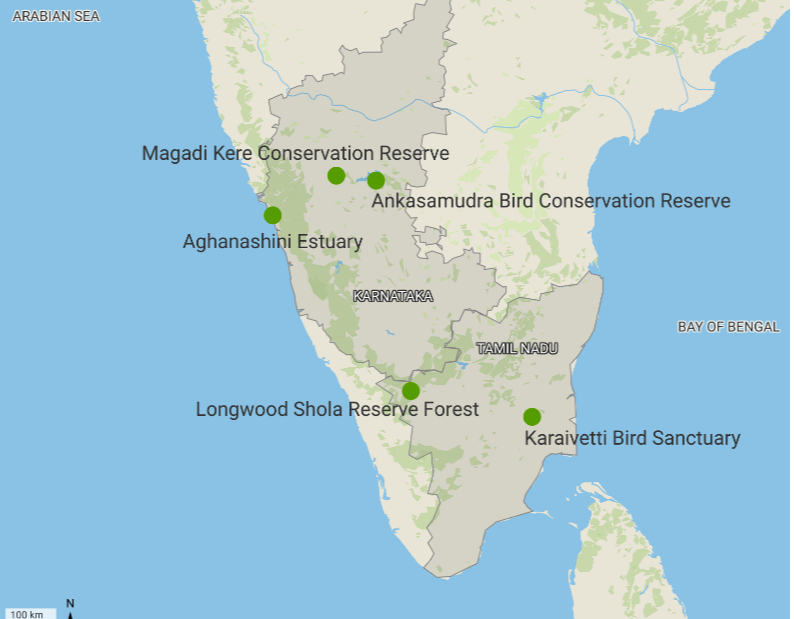There are no items in your cart
Add More
Add More
| Item Details | Price | ||
|---|---|---|---|
GS Paper II- Issues related to Health
1. Cervical Cancer
GS Paper III- Indian Economy
2. Blue economy 2.0
GS Paper III- Fertilizer and subsidy-related issues.
3. Nano DAP
Prelims Booster:-
4. Five new sites added to Ramsar list
5. Subika paintings
6. National Mission for Mentoring
7. Zodiacal Dust
GS Paper II- Issues related to Health
Context:-
The Finance Minister announced the government’s plans to focus on vaccination against cervical cancer for girls aged 9 to 14 as part of her Interim Budget 2024.
Current Status:-
Cervical cancer, which develops in a woman’s cervix, is the second-most common cancer among women in India.
India accounts for nearly a quarter of all cervical cancer deaths in the world.
Uttar Pradesh, Tamil Nadu, and Maharashtra have the highest number of cases.
What is Cervical cancer?
Cervical cancer is a type of cancer that occurs in the cells of the cervix — the lower part of the uterus that connects to the vagina.
Various strains of the human papillomavirus (HPV), a sexually transmitted infection, play a role in causing most cervical cancer.
When exposed to HPV, the body's immune system typically prevents the virus from harming.
In a small percentage of people, however, the virus survives for years, contributing to the process that causes some cervical cells to become cancer cells.
Symptoms:
Early-stage cervical cancer generally produces no signs or symptoms.
More-advanced cervical cancer includes Vaginal bleeding after intercourse, between periods or after menopause.
Watery, bloody vaginal discharge that may be heavy and have a foul odor.
Pelvic pain or pain during intercourse.
Types of cervical cancer:
The type of cervical cancer that you have helps determine your prognosis and treatment.
The main types of cervical cancer are:
GS Paper III- Indian Economy
Context:-
The Interim Budget presented by the Finance Minister stressed environment-friendly development through the promotion of a ‘Blue economy’.
GS Paper III- Fertilizer and subsidy-related issues.
Context:
Finance Minister Nirmala Sitharaman, presenting the interim budget announced the expansion of the application of Nano DAP on various crops in all agro-climatic zones.
Context:
Five more Indian wetlands have been added to the global list of wetlands of international importance under the Ramsar Convention, taking the total number of such highly recognised waterlogged ecosystems in the country to 80.
About New Ramsar sites:
Aghanashini Estuary (Karnataka):-
Magadi Kere Conservation Reserve (Karnataka): -
Ankasamudra Bird Conservation Reserve (Karnataka):-
Longwood Shola Reserve Forest (Tamil Nadu):-
Ramsar Site:
Ramsar sites are wetlands that are recognized as being of global significance under an environmental treaty.
The treaty was signed in February 1971 at Ramsar, Iran and is endorsed by UNESCO.
Ramsar's mission is to encourage national action and international collaboration to protect wetlands and promote their responsible use.
Currently, India has 75+5 Ramsar sites that are recognized under this treaty.
Context:
Manipur boasts a rich cultural heritage but some of its invaluable art forms like Subika Paintings are on the brink of extinction due to neglect.
About Subika Paintings:-
Subika painting is a form of art closely tied to the cultural heritage of the Meitei community.
Currently, six manuscripts incorporate this style of painting, including Subika, Subika Achouba, Subika Laishaba, Subika Choudit, Subika Cheithil, and Thengrakhel Subika.
While there is no mention of a specific founder in the royal chronicle, Cheitharol Kumbaba, some experts believe that this art form existed during the introduction of the writing tradition in the state.
Most scholars estimate that Subika painting has been in use since the 18th or 19th century.
Subika Laisaba:-
Context:
The National Council for Teacher Education (NCTE) organized a 2-day Year End Seminar for Sharing Best Practices and Periodic Review/continuous evaluation of the National Mission for Mentoring (NMM) with all stakeholders.
National Mission for Mentoring (NMM):-
Aligned with the National Education Policy (NEP) 2020, the National Mentorship Mission (NMM) was launched on July 29, 2022, as a pilot program in 30 Central Schools across the nation.
The primary objective of NMM is to establish a robust mentorship system that empowers teachers to improve their teaching practices.
About Mentoring:-
Mentoring is a valuable tool for both personal and professional development, providing a wealth of benefits to those involved.
Significance:-
Mentors can help mentees develop skills and knowledge, offer career guidance and networking opportunities, increase their confidence, transfer knowledge, contribute to personal growth, and expand their perspectives through different approaches to problem-solving.
Context:-
The Physical Research Laboratory in Ahmedabad conducted a study that analyzed the origin of interplanetary dust that creates zodiacal light.
The study focused on Deimos and Phobos, the moons of Mars.
What is Zodiacal light?
Zodiacal light is best observed in the spring or fall when the ecliptic plane is at a steep angle to the horizon.
It can be seen from any location on Earth, though it is easier to spot from dark, rural areas with little light pollution.
The phenomenon was first described by the ancient Greeks, who believed it was caused by the tails of comets.
Today, we know that light is caused by the reflection of sunlight off of tiny particles of dust and debris in the inner solar system.
Despite being relatively faint, the zodiacal light is a beautiful and awe-inspiring sight that reminds us of the vastness and complexity of our universe.
